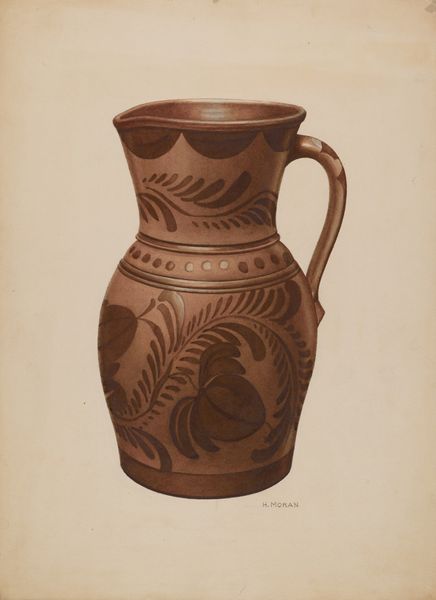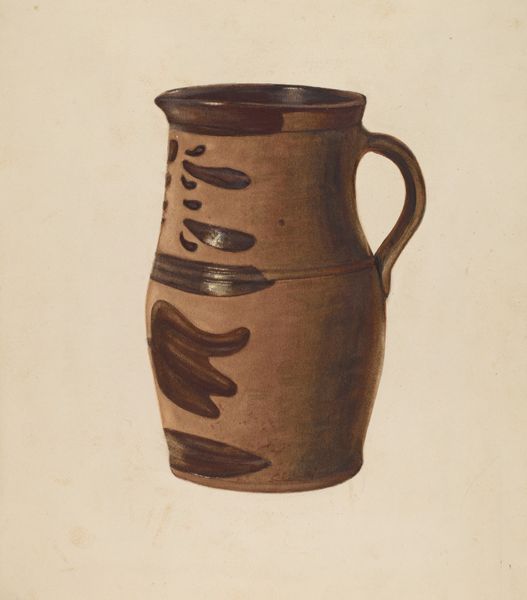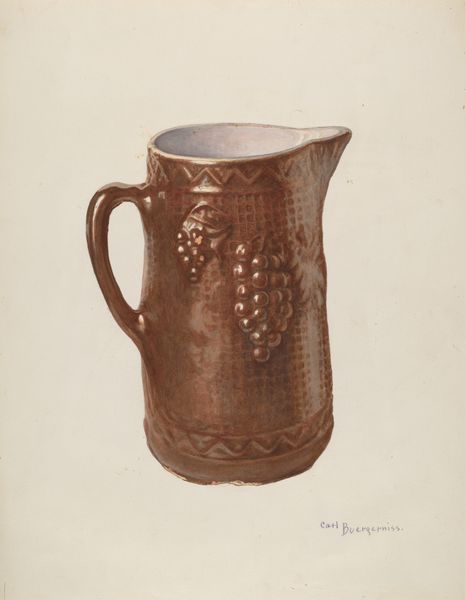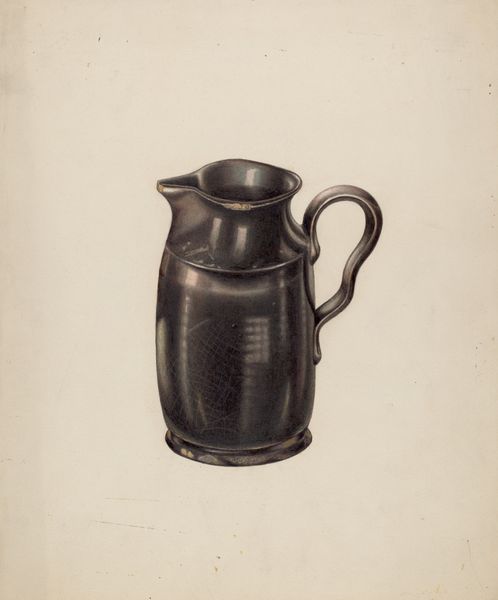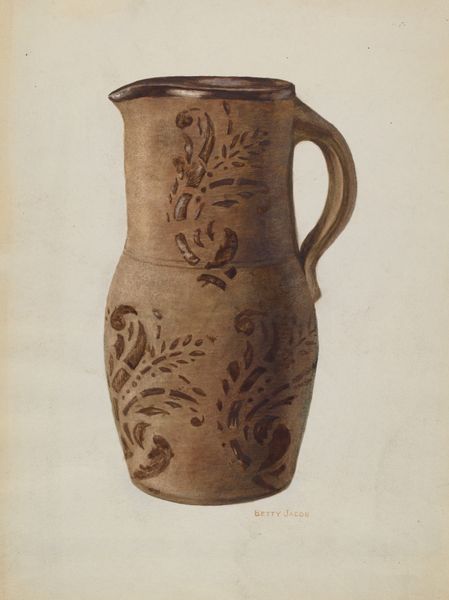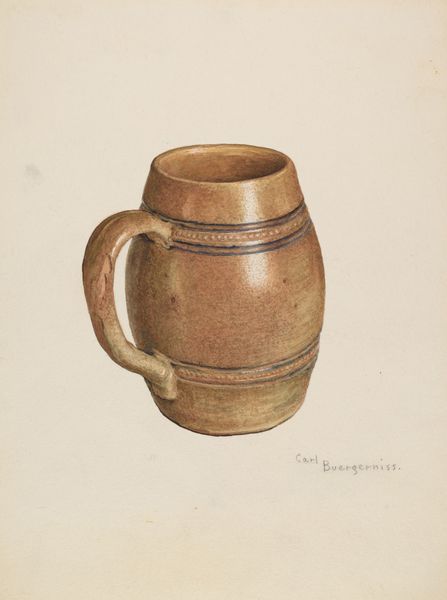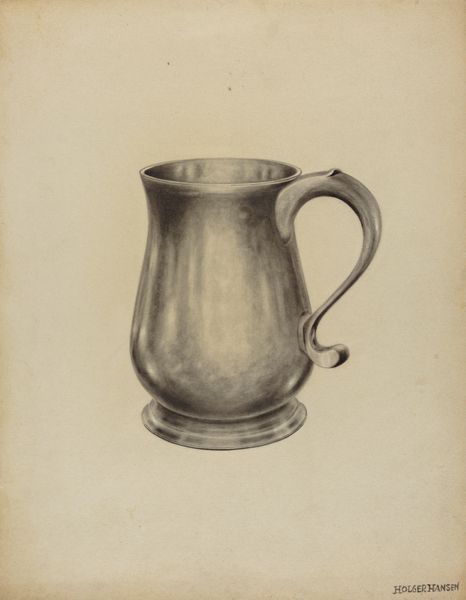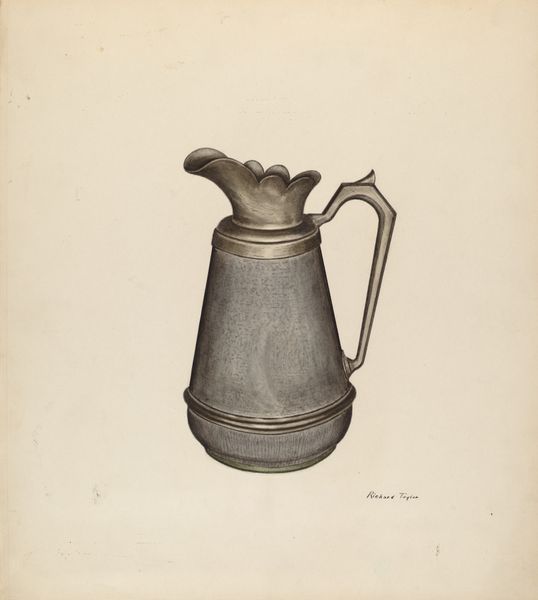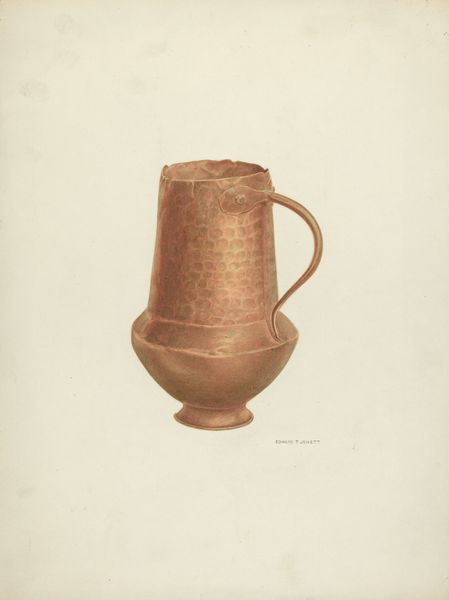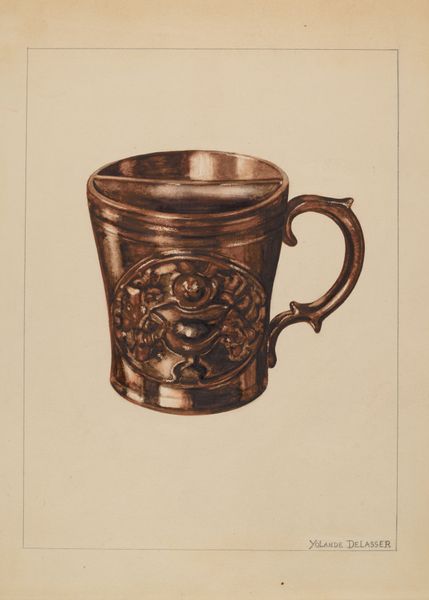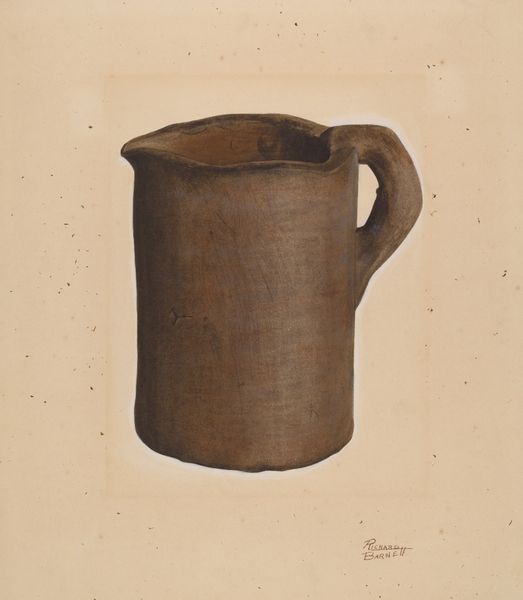
drawing, watercolor
#
drawing
#
charcoal drawing
#
watercolor
#
watercolour illustration
#
watercolor
Dimensions: overall: 32.9 x 27.3 cm (12 15/16 x 10 3/4 in.)
Copyright: National Gallery of Art: CC0 1.0
Curator: What immediately strikes me is the understated beauty of this earthenware form, softened by the gentle gradations of watercolor and charcoal. There's a quiet elegance in Moran's composition, wouldn't you agree? Editor: Indeed. While the aesthetic is pleasing, I find myself wondering about the role of this pitcher in the daily life of its users. How might its presence reflect the economic or cultural values of that time, in, say, the 1940s? Curator: A valid point. What's intriguing is how Henry Moran, working circa 1941, emphasizes volume and curvature through a reductive color palette of umber tones and delicate shadows. This isn't just about representing an object; it's an exercise in form, weight, and three-dimensionality. The minimalist ornamentation of stylized leaves offers a visual break. Editor: I agree there is intentionality here, especially when considering art movements of that time. However, the choice of representing a common domestic object still begs consideration within the wider context of everyday aesthetics during the mid-20th century. Is Moran commenting on the simplicity of rural life, perhaps? Curator: Possibly. However, one can look simply at the interplay of light and shadow which models this humble utilitarian object in a manner redolent of classic still life studies. See how the watercolor evokes a gentle translucency, subtly highlighting form rather than merely copying surfaces. Editor: I’d push us to think of the symbolism embedded in something like a water pitcher. How it relates to labor, domesticity, gendered spaces... Water sustains, and the vessel becomes culturally significant. We shouldn't divorce it so readily from these connections. Curator: And perhaps that's where our viewpoints diverge! For me, the artistic strength of Moran's "Pitcher" lies in how he uses light and dark to transform the mundane into an exploration of form. This speaks beyond simple representation to the pure pleasure of observing shapes and tonalities. Editor: Ultimately, our dialogue serves to widen understanding and highlight potential points of inquiry. Both are critical, wouldn't you say? Curator: Absolutely, offering unique facets into the contemplation of such a beautiful, quietly compelling piece.
Comments
No comments
Be the first to comment and join the conversation on the ultimate creative platform.
